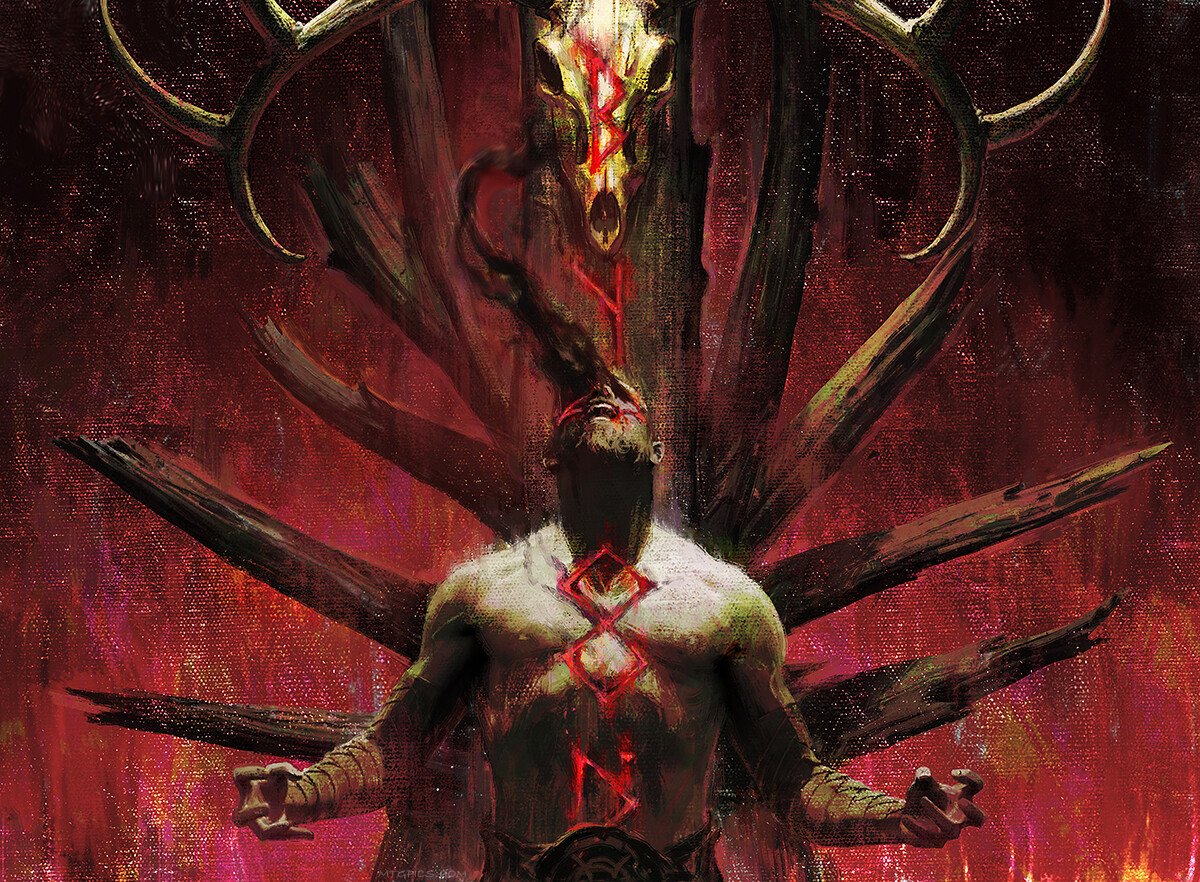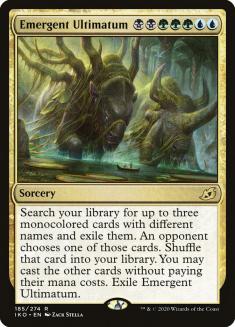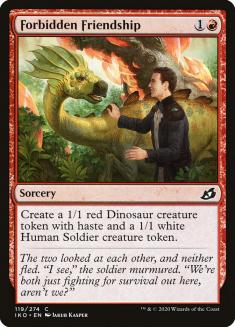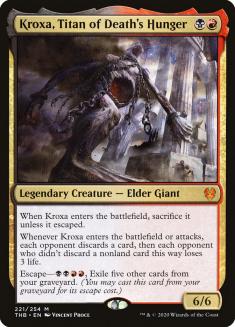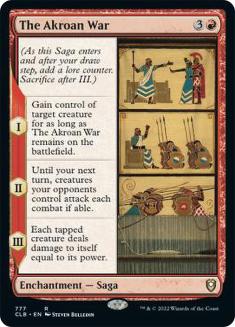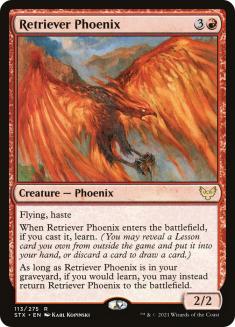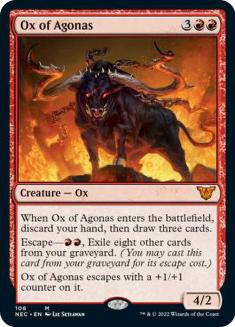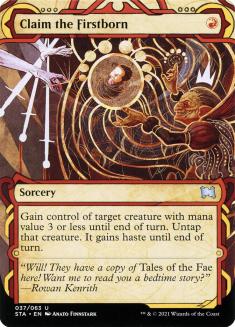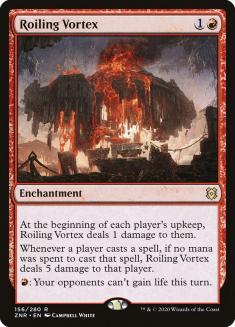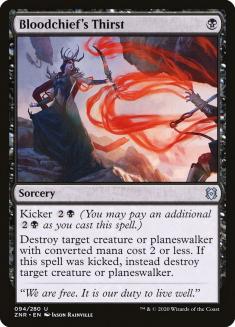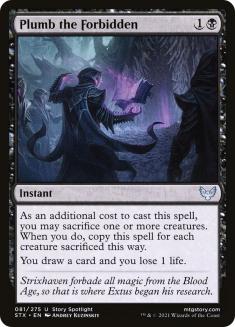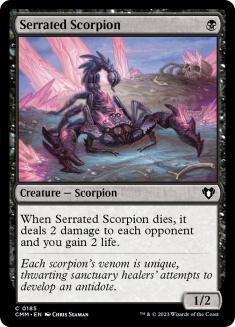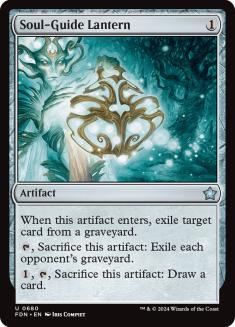Unfortunately for Rakdos fans, their color combination of choice hasn’t occupied Standard’s Tier 1 anytime recently. Somehow, Rakdos has been the color combination that represented hope. Whenever a metagame got stale, a new version of Rakdos would pop up and allow players to believe they could get out of the metagame rut they were in. Shortly after, the metagame would adapt to Rakdos, it would fade out of existence, and we’d go back to the metagame from two weeks ago.
Well, history tends to repeat itself.
Creatures (18)
- 2 Rankle, Master of Pranks
- 2 Bonecrusher Giant
- 2 Woe Strider
- 3 Kroxa, Titan of Death's Hunger
- 4 Serrated Scorpion
- 1 Immersturm Predator
- 4 Eyetwitch
Lands (19)
Spells (23)

For full disclosure, I don’t believe this Rakdos deck solves everything. However, it’s closer than we’ve been. Not only did Rakdos finish third, it’s also been picking up a ton of traction on Magic Online. That resurgence, despite history, gives me hope.
Bryan has been hammering people about Plumb the Forbidden for so long that I don’t see much point trying to reiterate his points. It’s powerful in the right circumstances and just needed to find the right home. Oddly, it was easy to come up with a suitable home, just not one that was clearly going to be successful in Standard.
Any deck that leans toward the slower side has to contend with Sultai’s Emergent Ultimatum top-end. Unfortunately, Rakdos typically falls under that category and there isn’t much to do about it directly. The Sacrifice deck wants to build up its resources to form a critical mass where each piece gets better with the others and that takes time.
Thankfully, we’ve identified the best plan for beating Emergent Ultimatum, which is burning them out. Sultai doesn’t have much in the way of lifegain, so letting them resolve Ultimatum and trying to piece together lethal damage after the fact is a great plan. If you can’t kill your opponent before they resolve Ultimatum, find a way to kill them afterward.
Unfortunately, Bastion of Remembrance and Rakdos’s clock live in that special hell of not lining up well against Binding the Old Gods and their companion Yorion, Sky Nomad. If you happen to dodge Binding, Ultimatum itself might get you, but at least you have the opportunity to piece together lethal. Because of all this, you tend to care more about using Duress to stop Binding rather than Ultimatum in the sideboard games.
Beating Sultai Ramp is still a tall order and the main reason I gave up on Rakdos strategies to begin with. The combination of Claim the Firstborn and The Akroan War combined with sacrifice effects was enough to beat most Standard decks, and you could beat Sultai at a reasonable clip. I was looking for the perfect plan to crush Sultai and gave up when I failed to solve the puzzle. Maybe I gave up too early and should have been content having a plan at all.
This is what I would play this weekend.
Creatures (13)
Lands (23)
Spells (24)

This build of Rakdos wants to go wide with Eyetwitch, Serrated Scorpion, and Forbidden Friendship. Eventually, you’ll cash them in with Village Rites or Plumb the Forbidden to tear through your deck and do it all over again. If you have a Bastion of Remembrance on the battlefield, your opponent will have a difficult time actually killing you. It’s a death by a thousand cuts.
Serrated Scorpion is a nice addition that fills the mana curve, gives you an early blocker against aggressive decks, and provides another body for Plumb. It also contributes nicely to the nickel-and-dime plan alongside Bastion.
I haven’t had a reason to cast Forbidden Friendship until now and I remember why — it’s not a powerful card. However, it does synergize with the rest of the deck and is worth playing overall. Hunt the Specimens was what I was working with most of the time but Friendship is stronger once Bastion is in the mix. Having fewer cards with learn doesn’t impact the validity of a Lesson sideboard because I’m not playing many Lessons to begin with. Overall, Lessons are aggressively medium and you shouldn’t go overboard.
Forbidden Friendship might be a card you’d only expect to be played alongside Awaken the Blood Avatar. However, it synergizes well enough with the rest of the deck to leave the Avatar on the sidelines. I want Extus, Oriq Overlord to be good enough to play. Some players throw caution to the wind and still play several copies. From my experience, it lines up poorly against Brazen Borrower and spot removal. Nothing else you play is worth killing and your clock is slow, so it’s not uncommon for your opponent to have Heartless Act and two mana at the ready.
Kroxa, Titan of Death’s Hunger is also absent, which will cause some raised eyebrows. Thankfully, I’m not the only one that came to the conclusion that Kroxa isn’t particularly good in the archetype. It’s a powerful card in a vacuum but it doesn’t fit the overall gameplan, nor is it a card you want to draw against many of the decks in Standard.
In theory, the chip damage works with the strategy of the deck, except it’s unreliable. Casting Kroxa on Turn 2 isn’t what this deck wants to be doing. And while using Village Rites on an escaped Kroxa might feel nice, this deck wants to add more to the battlefield. Having access to it later can be nice if you run out of gas, except there are other escape cards that actually fit the theme.
The Akroan War is excellent in most matchups, plus Rakdos is uniquely set up to deal with any potential awkward scenarios where your opponent might actually get their creature back. It’s one of the cards I wanted against the majority of Standard’s decks, so I kept adding more copies. Eventually a couple of them ended up in the maindeck and it’s a decision I’m very happy with.
If Standard consists mainly of decks with creatures that necessitate The Akroan War and Heartless Act, why don’t we maindeck all the copies? This is a synergy deck, which requires many moving pieces and a critical mass of resources. Drawing a pile of spot removal can interfere with drawing enough of the sacrifice engine to make it matter. You have to play the right mix without going overboard.
After sideboarding, your plan can change. Against some matchups, the Bastion isn’t necessary and you’d prefer to become a removal-heavy control deck, which obviously isn’t a configuration you can have in your maindeck while trying to compete with Sultai Ramp.
My suite of interaction looks random but I stand behind it. Bonecrusher Giant is one of the best cards to have against aggro and Heartless Act is your catchall. I wanted more spot removal in the sideboard and having more copies of either card didn’t solve my problems. Occasionally, a Scavenging Ooze or Flourishing Fox would show up and neither card would do the trick. Getting glutted on two-mana plays also happened, so Bloodchief’s Thirst was the natural solution.
Retriever Phoenix eventually consumed a ton of my time. It works well with the sacrifice effects but you can’t get up on cards without Plumb the Forbidden. As a value card, Phoenix is lacking, although it does contribute to maintaining pressure and traction. It’s also a low opportunity cost to have another body that can bounce on and off the battlefield. Getting the critical mass of triggers from Bastion of Remembrance is important, as is the chip damage, but does Phoenix contribute more than something like Woe Strider or Bonecrusher Giant? Sadly, the answer seems to be no unless we’re gifted a playable way to deposit cards in our graveyard that fits the strategy (no, Magmatic Channeler or Tymaret Call the Dead don’t count).
As I mentioned, the Lessons aren’t cards you’re hyped to cast, but having extra cardboard to work with is always welcome. That said, you really only need Pest Summoning and Necrotic Fumes. Cards like Start from Scratch might seem nice to have access to but it probably won’t kill an Embercleave or The Great Henge before you lose to them anyway. It constantly sat in my sideboard until eventually I got rid of it entirely.
The rest of my sideboard is a pile of cards to beat up on Sultai Ramp and Soul-Guide Lanterns for the fringe archetypes. You could cut those for more Roiling Vortexes but drawing multiple copies isn’t even necessarily good against Sultai Ramp. If you draw a copy, save it until the turn before they would cast Emergent Ultimatum to get maximum tempo from it. Trust me, you’ll need the extra breathing room.
Matchups
VS Sultai Ramp (Yorion)
Out:
In:
Naturally, this is the toughest matchup. You have to juggle putting pressure on them while also disrupting them and not walking into their sweepers. They might draw a random Elder Gargaroth and beat you that way. If you only have time to practice one matchup, it should be this one.
VS Dimir Rogues (Lurrus)
Out:
In:
You’d expect the matchups with a ton of removal to be where you’d want Bastion but this isn’t one of them. Instead, stick with the old Gruul Adventures strategy of becoming a controlling deck with removal of your own and escape cards to punish them. It’s more effective than your Plan A.
Note that if you wanted to sideboard up to 62 or 63 cards to give you slightly more breathing room against their mill, that’s allowed. After sideboarding, your mana curve is so low you can get away with it. If you try it, I’d consider bringing in the fourth Duress and some Soul-Guide Lanterns.
VS Naya/Temur/Four-Color Adventures
Out:
In:
As long as you can contain Edgewall Innkeeper, you should be able to blunt their aggression and eventually win with chip damage. The Akroan War is your best card.
VS Mono-Red Aggro❄
Out:
In:
Thankfully, your mediocre bodies actually do work here against Rimrock Knights and the like. Although you want some sacrifice outlets for Claim the Firstborn and The Akroan War, Plumb the Forbidden is slow and cutting it is fine.
VS Mono-White Aggro❄
Out:
In:
We’re bringing in the same cards as the other aggro matchups, except Mono-White Aggro❄ gives you more breathing room than Mono-Red Aggro❄. They’re faster than Adventures against a goldfish but have roughly the same clock once your blockers, lifegain, and removal are taken in consideration, so you have more time to set up Plumb the Forbidden.
VS Jeskai Cycling
Out:
In:
Jeskai Cycling, like Sultai Ramp, comes at you from many different angles. Thankfully, they’re much easier to contain. If you can stop their early threats, you usually won’t die unless they find two copies of Zenith Flare, which Duress and Soul-Guide Lantern can handle.
VS Izzet Dragons❄
Out:
In:
One of the scarier matchups is Izzet Dragons❄. They have a fast clock, can shrug off your mediocre creatures, and have a powerful top-end. Similarly to the aggro decks, if you stem their aggression, you’ll be able to fight through their disruption eventually. Save removal for Goldspan Dragon, Duress the occasional Alrund’s Epiphany or counterspell, and you should be fine.
VS Rakdos Sacrifice
Out:
In:
Honestly, the versions of Rakdos vary so widely that I wouldn’t recommend following this sideboarding guide to the letter. If they have Kroxa or Immersturm Predator, some copies of The Akroan War are necessary. Claim the Firstborn isn’t great against the various 1/1s but stealing a dies trigger from Eyetwitch or Serrated Scorpion is nice. Plus, keeping their battlefield small makes their Plumbs and potential Awaken the Blood Avatars worse. If they’re playing the bigger cards, your goal should be to punish them.
At the end of the day, Rakdos isn’t one of the most powerful decks in Standard. Unless your deck reasonably comes together, you’ll lose to the plethora of decks out there with much higher card quality. The upside comes from the efficacy of Claim the Firstborn and The Akroan War alongside sacrifice effects, which happens to beat most of the decks out there. Rakdos Sacrifice should be a metagame call.
If you want to break Strixhaven Standard’s monotony, punish people for playing powerful creatures, and attack people with a horde of Draft chaff, Rakdos Sacrifice is for you.

